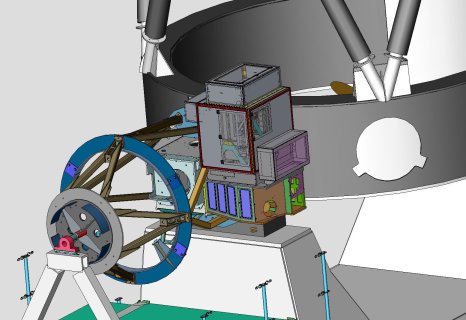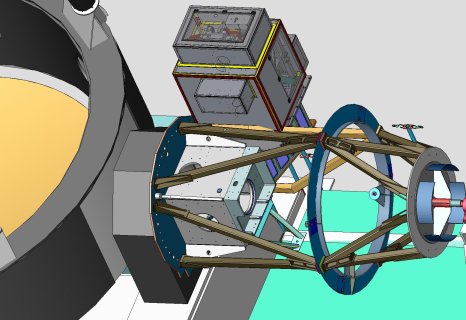Description
The BTFI (Brazilian Tunable Filter Imager) is a highly versatile, new technology, optical imaging interferometer proposed to be built for the SOAR telescope, to be used both seeing-limited mode and high spatial resolution mode. Such an instrument opens up important new science capabilities for the Brazilian astronomical community from studies of nearby galaxies and the ISM to statistical cosmological investigations.
The instrument concept takes advantage of two new technologies that have been successfully demonstrated in the laboratory environment. The iBTF (imaging Bragg Tunable Filter) concept utilizes a Volume Phase Holographic (or Bragg Diffraction) Grating (VPHG) in double-pass configuration while the new Fabry-Perot concept involves the use of commercially available technology allowing a single etalon to act over a very large range of interference orders. The combination of both technologies allows for a compact, low-cost but highly versatile instrument which can be designed and constructed over a relatively short time-scale. Spectral resolutions spanning between 5-100 and 200-2000 can be achieved. Resolutions of R>>2000 can be obtained with the same optical system through insertion of a scanning Fabry-Perot (FP) into the beam. The iBTF+FP system is being designed to accommodate both seeing-limited (SL), work and GLAO-fed (FoV ~3') operation. The instrument is planned to be deployed at NIR port (for SL) and the SAM Visitor Instrument (VI) port (for GLAO).
While the full cost of such an instrument, including hardware and manpower, is estimated to be in the region of ~US$3.7M, we are planning to employ USP, INPE and LNA manpower for much of the design work bringing the total cost to FAPESP down to ~US$700k. The project is estimated to be complete within a 30 month time-frame.

